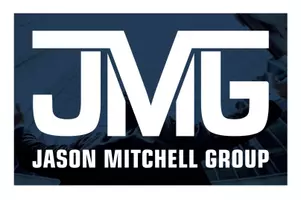‘It’s more creative:’ One small area of homelessness aid is getting big results
On a Tuesday in October, one chain reaction almost caused another.
A car parked at one of San Diego’s safe lots for homeless families wouldn’t start in the morning, and a mechanic quickly diagnosed the problem: Faulty head gaskets were allowing oil to leak onto the alternator, which in turn caused the alternator to fail. Unless the family living out of that vehicle came up with about $1,300, the parents would be kept from work, the kids couldn’t go to school and everyone might lose a place to sleep.
Luckily, Jewish Family Service, the nonprofit running the lot, had money set aside for just that type of situation, recalled Jesse Mendez, the group’s director of safe parking. “If they can keep their vehicle running,” Mendez said, the family “can live somewhat of a normal life — as well as having that income to get into their own housing.”
Experts have long said one-time payments to cover emergency expenses can both end people’s homelessness quickly, before they endure long periods outside, and prevent other residents from losing homes in the first place. The approach is often called diversion — and like many areas of homelessness spending, it can be tricky to figure out exactly how much the region has invested in this strategy.
The question has extra resonance at a time when local deficits and federal cuts are forcing leaders to make tough choices about which programs stay afloat.
One imperfect answer: It appears the San Diego area annually has at least $5.7 million in so-called “flexible funding” accounts. That number is based on public records and statements from officials with the city of San Diego, the San Diego Housing Commission, the county and the Regional Task Force on Homelessness.
The total is likely an undercount. The city of San Diego’s multi-million-dollar safe parking program, for example, allows some money to be used for one-off payments but a spokesperson did not have a specific dollar amount for the current year. The county also has flexible funding contracts with organizations serving broader populations than just those who are homeless or near homelessness.
Regardless, the number is a fraction of the tens of millions of dollars spent on local shelter beds and the hundreds of millions of federal funds regularly going toward rental aid.
Proponents of diversion want to increase that share. Ed Boyte, a consultant who trains outreach workers around the country, praised what San Diego has already done. “It’s more thoughtful, it’s more intentional and it’s more creative,” said Boyte, who founded the consulting firm The Listening Group.
He was particularly complimentary toward Alpha Project, which began its diversion initiative in late 2023. Last year, the nonprofit gave one-time payments to 81 households, according to Alpha Project data and compliance director Sofia Cardenas. Most of that group — 66 households — soon made it into permanent homes.
So far this year, 75 out of 83 households have landed housing, Cardenas said. Some only needed a $50 gas gift card. Others required up to $8,000 to pay off debts and afford an apartment deposit. On average, households received around $3,000.
Diversion is geared toward residents who just lost a place to stay. Many of the people who qualified for help, however, met the definition of chronic homelessness. “That turned out to be a little bit of a surprise,” Cardenas added. Those individuals usually had jobs and simply needed a small boost to get back on their feet.
Among the hundreds of households countywide who received one-time aid last year, 93% got housing, according to a recent report by the regional task force. Almost everyone was still under a roof when officials checked back in several months later.
Other organizations with flexible funding contracts include Dreams for Change, People Assisting the Homeless and YMCA of San Diego County. The Downtown San Diego Partnership, which oversees a services hub in the central library, has around $150,000 for diversion.
All of those pots of money may be somewhat insulated from cuts coming out of Washington D.C. Diversion programs generally aren’t supported with federal dollars as that money comes with too many strings attached. The U.S. Department of Housing and Urban Development even bars its grants from going toward diversion.
Deficits at the city, county and state level are likely a larger threat. Twelve shelter contracts in the city of San Diego currently have to share $63,830 for “flex or client financial assistance,” Scott Marshall, a spokesperson for the San Diego Housing Commission, wrote in an email. “Unfortunately, this line item has decreased from previous years due to budget constraints.”
Officials have also burned through $350,000 that the county previously invested in one diversion initiative managed by the task force. “The County continues to actively look for funding sources to contribute additional funds,” wrote spokesperson Tim McClain.
Cardenas, with Alpha Project, stressed that nonprofit staffers vet the people asking for aid before giving the money directly to, say, landlords or creditors, thereby reducing the chances that funds are misused. Boyte, the consultant, added that the amounts at play were often too low to attract potential fraudsters.
He shared a story of once working in a shelter in Cleveland, Ohio, where a man walked in to ask for a bed. Boyte asked how he’d become homeless, and the man said he wasn’t able to pay Cleveland State University about $300. Because of that debt, he couldn’t register for classes, which meant he couldn’t get student loans, which was how he was paid for housing.
Boyte was incredulous. He asked: So if we log onto your student portal and pay that money now, you’re back under a roof? The man said yes. The debt was soon paid.
“He was in the shelter for 45 minutes to an hour-and-a-half,” Boyte said. “We never saw him again.”
Categories
Recent Posts










GET MORE INFORMATION


